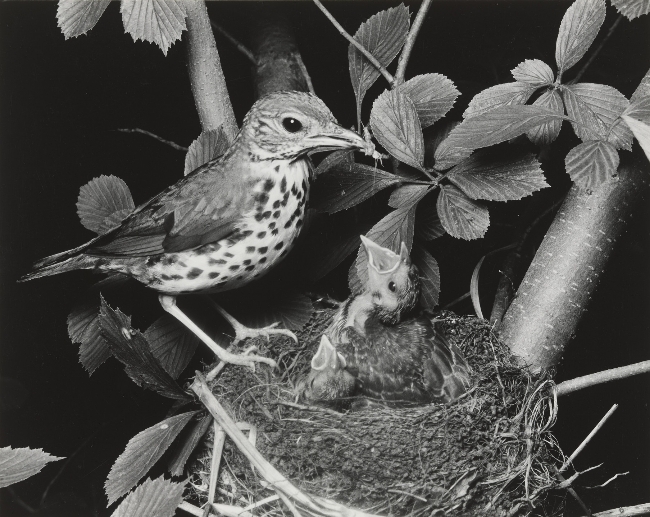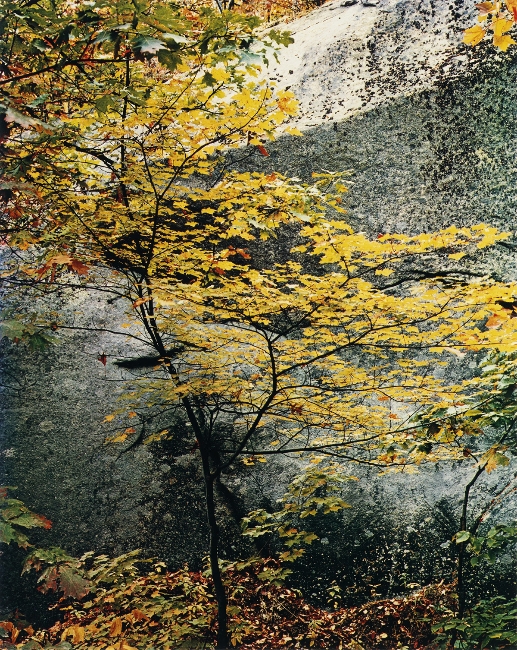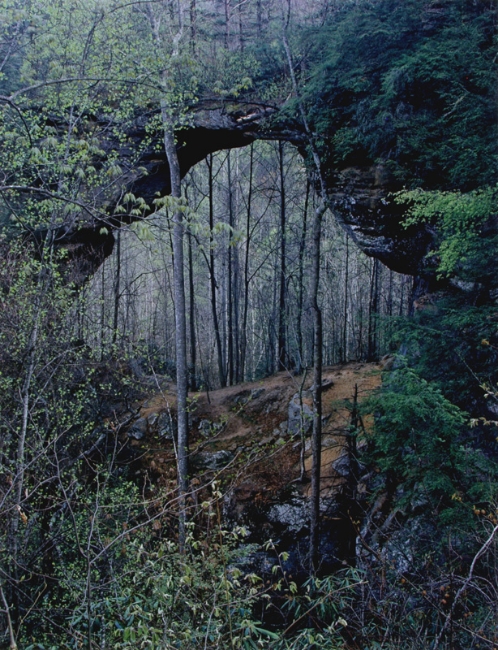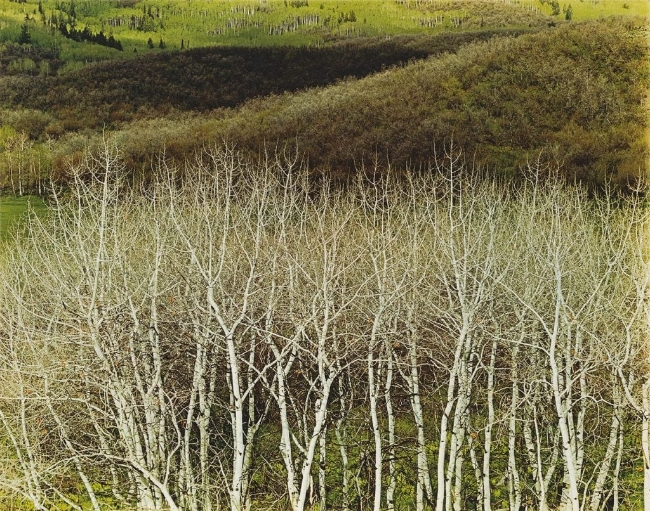If you’ve ever taken a nature photograph–budding trees in spring, fallen leaves in the autumn, bare-limbed trees covered in snow, a lichen-covered stone–you owe a debt to Eliot Porter. Virtually all modern nature photography mimics the style created and developed by Porter.
The photographs you see in this discussion may seem mundane, the subject matter might seem banal, the composition trite. What you need to remember, though, is that Eliot Porter is essentially the original modern color nature photographer. Eliot Porter was there first.
Porter was born in 1901 in Winnetka, Illinois, one of the wealthiest communities in the US. His father was an architect and real estate tycoon who bought Great Spruce Head Island on the coast of Maine for his family’s summer holidays. It was there that Porter developed both his love of nature and his interest in photography. He decided to create a photographic record of the birds on Great Spruce Head Island, which he hoped to turn into a book. The book proposal was rejected, however, because the black-and-white photos didn’t clearly differentiate the species.

Kodak had recently (1935) introduced Kodachrome, a new 35mm color reversal film. It was unpopular for a couple of reasons: first, ‘real’ photographers worked in black-and-white, and second, it was technically difficult to work with, both in terms of exposure and processing.
Porter immediately set out to master color photography. He initially relied on a very slow color: ASA 4. That’s right–4. It was also at that time that Porter began his practice of using complex techniques for processing his prints. He didn’t, however, restrict himself to photographing birds. Instead, he re-invented and revolutionized nature photography.

Until Porter came along, all serious artistic landscape photography was lodged firmly in the Ansel Adams school–impressive black-and-white vistas photographed on a grand scale. Porter changed all that. He doggedly championed the use of color in photography against fierce resistance from the photographic community, and he insisted that nature photography should include a more intimate perspective.
Most people, Porter asserted, experienced nature on a close scale. Walks in the park, hiking in the woods–the operative term was in. Beauty wasn’t to be found only from a distance, it needn’t be formal or awe-inspiring. Beauty could also be found right in front of you, informal and the simple. A leaf floating on the surface of a pond.

This led eventually to the publication of his first book: In Wildness is the Preservation of the World. This was a seminal work in many ways. It not only redefined a genre of photography, it brought a new standard for the design and printing of photography books. We’re accustomed to such books now, but in 1962 this sort of over-sized ‘coffee table’ book was revolutionary. The book also brought popular attention to its publisher, the Sierra Club, making it the best known and most powerful environmental organization in the US. Despite the fact that the book sold for a very high price ($25 in 1962), it was a massive commercial success.

It took another decade or so before the landscape and art photography community began to embrace color photography. Porter continued to take intimate nature photographs for the rest of his life. He never abandoned his interest in the sciences, however. The last book Porter published in his lifetime was Nature’s Chaos, which combined his photographs with the writing of scientist Richard Gleick (whose 1987 book Chaos popularized chaos theory). Porter died at the age of 89 in 1990, the same year the book was published.
Eliot Porter’s work now seems almost commonplace. It’s hard now to imagine an era in which his style and approach could be seen as subversive to the art of photography. It says something about the elastic nature of art that a style once decried as a threat is now so unexceptional that it is sometimes disparaged as mundane.
